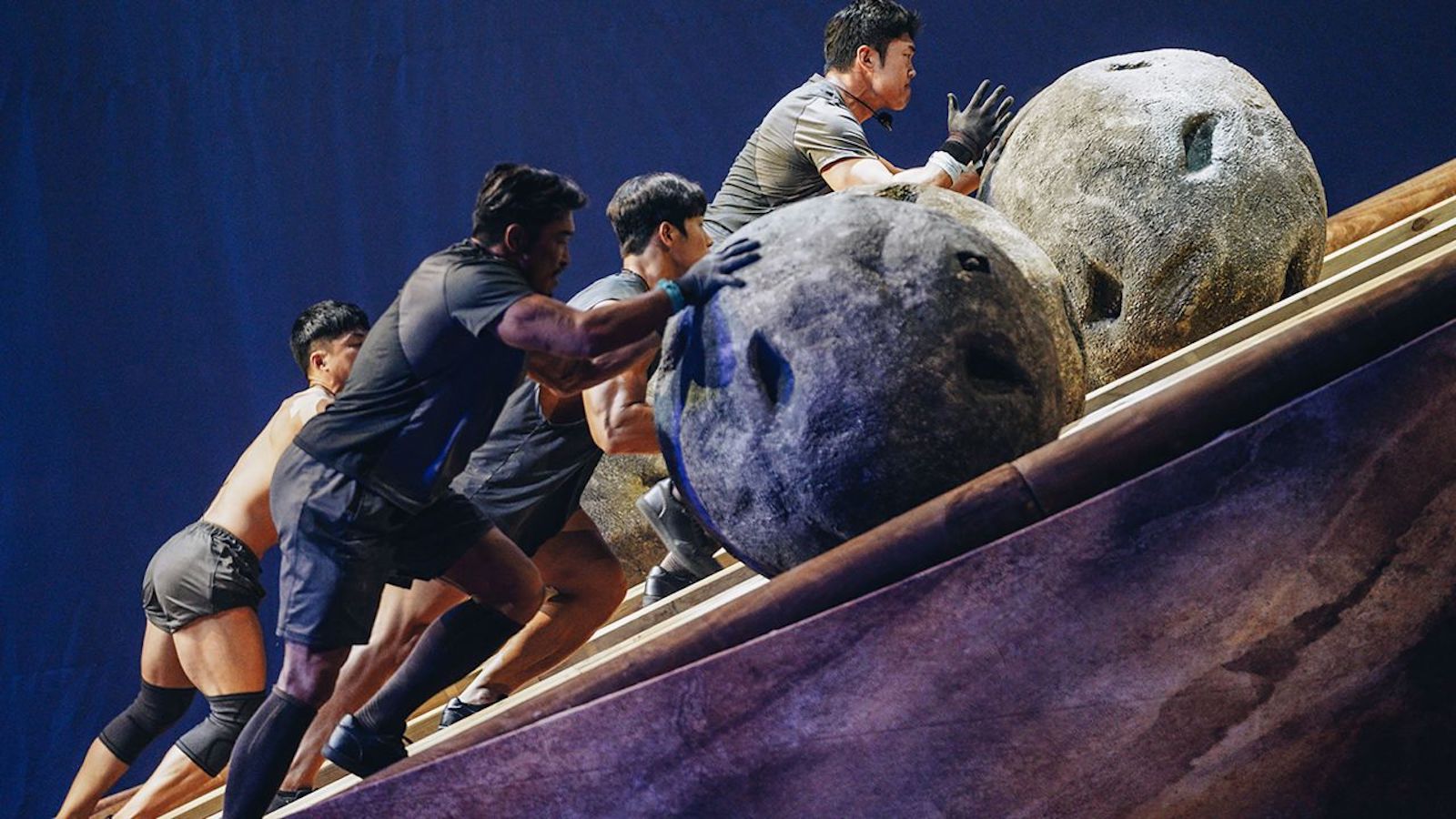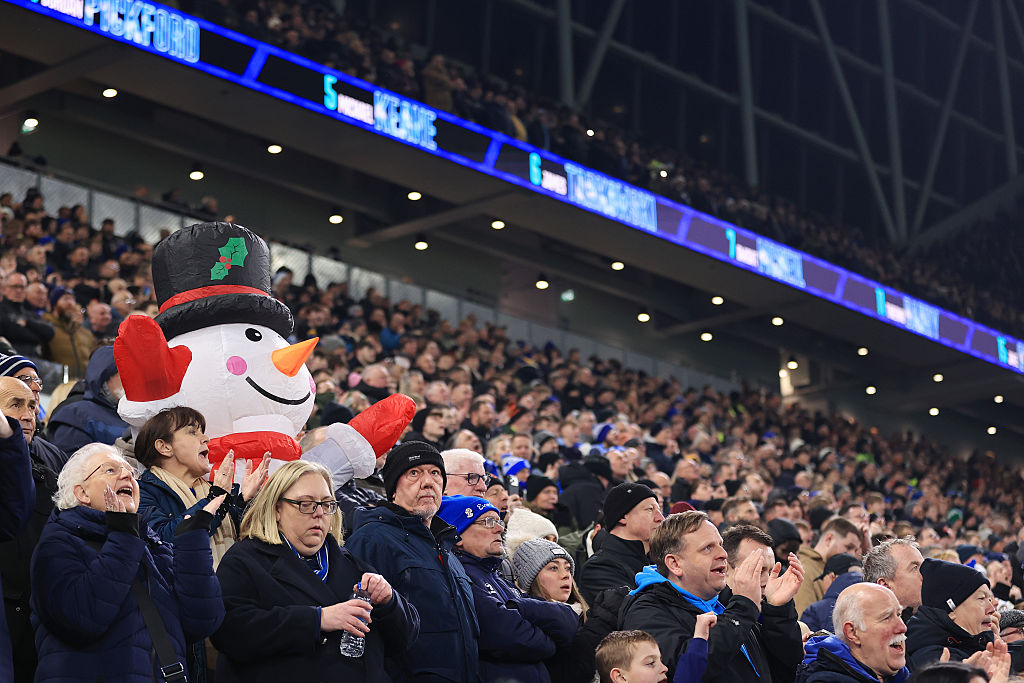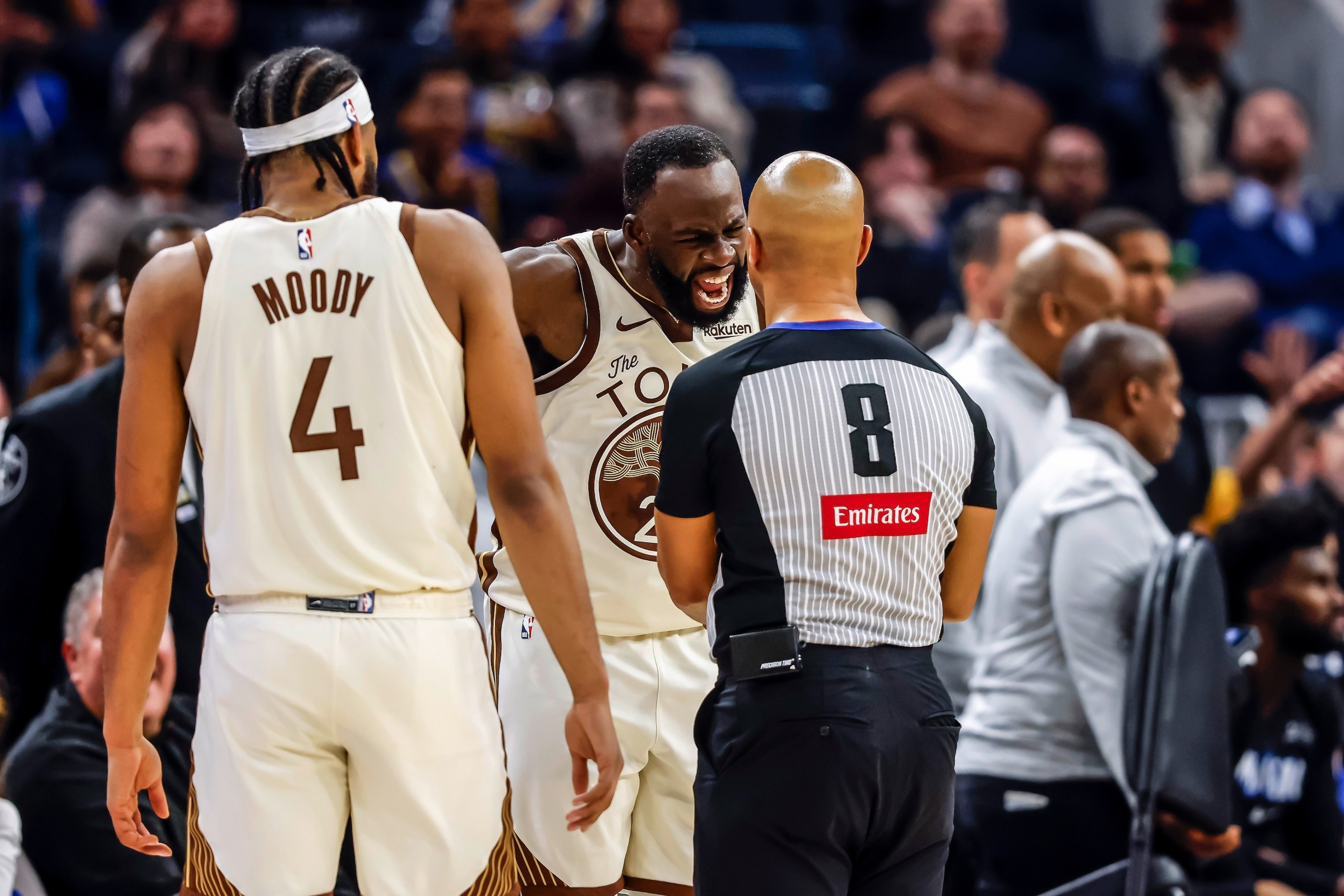There is the unmistakable and frankly bizarre flavor of Greco-Roman kitsch running throughout Physical: 100, a Korean reality challenge show recently released on Netflix. The titular 100, comprised of bodybuilders, Olympians, CrossFit enthusiasts, strongmen, professional athletes, MMA fighters, and various fitness influencers, compete in a series of grueling games and feats of physical prowess, all in order to, as per the show’s mysterious, always-unseen emcee, “find the perfect physique.”
Each contestant has had a white plaster cast made of their bare torso and during Physical: 100’s first episode, contestants begin to filter into a large auditorium where the torsos are displayed. As various characters and personalities are introduced—the cocky champion, the humble veteran, the gregarious dancer, the elder fighter—the audience watches along with the contestants as everyone naturally separates throughout the room, drawn to similar professions, past acquaintances, or their own bodies rendered in sculpture. They whisper and point, at each other, at their plaster torsos, at the variety of strength and size around them. Physical: 100 is not a beauty contest and the definition of the perfect physique is meaningless (perfect for what?), even after the ensemble has been whittled down to its prevailing champion. And yet, in the first episode’s drawn-out introductions, it’s hard not to start taking sides.
The sheer subconscious force of received notions about health, weight, age, diet, and fitness thrum in waves as the show goes on. Physical: 100 functions, depending on where one is coming from, as a grand advertisement for any and every gym membership, or a visceral, existentially fraught showcase of the ways that the body can be molded, manipulated, and contorted. You see grotesque, ballooning muscles of bodybuilders, with their protruding veins, ever-flushed and yet seemingly paper-thin skin. You see the wiry, lithe limbs of ice climbers, cheerleaders, and dancers who move in quicksilver flashes. You see the carefully sculpted, effortfully defined abs and deltoids of trainers and YouTubers, walking proofs of concept, butting up against the rounder, less assuming, “functional” conditioning of wrestlers, skeleton racers, rugby players. All of this coheres into a circus of bodies.
And that Greco-Roman flavor remains. It’s not just in the plaster torsos, or the seemingly random interstitial CGI shots of empty temples, columns, and arches caught in shafts of sunlight, but in the challenges themselves. At one point, after competing individually, the remaining 30 contestants are split into three teams and tasked with moving a two-ton ship from one end of the room to the other. The ship looks like a cast-off prop from a made-for-TV adaptation of The Iliad, a short trireme with a curved aft painted with two eyes. One team labors together, moving planks and barrels, pushing and pulling the ship through sand in a studio with a giant backdrop of the sky, and for a moment, there is something truly mythic, albeit in an absurd way, about Physical: 100. The show, like any dazzling feat of strength or Tom Cruise stunt or survival story, unintentionally lays bare a roiling desperation and fear that so many reality programs tend to mask. The contestants run and lift and drag and spar and climb across hours and miles of challenges, and the whole time I thought to myself, as I tend to after asking why anyone would want to go through something like this, “Oh. This is what fearing death looks like.”
The pandemic and its attendant ripples changed everyone’s lives, but the lasting effects of its exposure and the people it killed remain distant for some, whether by luck or pointed ignorance. This is not to say that there is any one way to cope, that normalcy has returned, or that these dire circumstances are novel. Rather, what has come into relief, at least in the way I’ve viewed life since lockdown, is the myriad forms of denial that suffuse daily life. The body has always been at the center of such denial: what it can do, what it once could but now can’t, what it never could, and the ways we react to its specific, personal, ever-changing limitations. The royal “we” hovers over conversations like these, and it’s tempting to paint with broad strokes. Even more so to draw attention to these generalized statements and point out their lack of universality. But death comes for all of us, and sometimes people do funny things to avoid thinking about it.
In late February, The Cut published a piece on Ozempic, a popular drug officially prescribed for type-2 diabetes but recreationally used in fashion, influencer, and various other image-anxious industries as a weight-loss aid. The piece resurfaced old but relevant conversations, about body image and slimness, medication, and who can afford to spend money on that which is, for them, non-essential. “We don’t talk about it, but everybody knows it. Thin is power,” one of several anonymous sources says in the piece, going on to sing the praises of their new dietary silver bullet. “You can eat one and a half meals a day and then you’re kind of hungry at night, but it’s not terrible. You can drink some tea with magnesium and maybe take a Xanax and get to sleep.”
These things always spread dark clouds, the extremity of that particular source’s statement notwithstanding. This can be true for weight loss as well as gaining muscle, as each offers the opportunity to cross the line dividing passion and obsession—something that motivates you, makes you feel better about yourself, or comes to dominate every thought. People turn to their bodies as locuses for change. It’s easy to be convinced that one should be eternally dissatisfied, that, in fact, the body is supposed to be a source of resentment and thus motivation. What has become manifestly clear over the last several years—as we each have stepped into or back from the roving eye of the internet and appraised our lives while they are dumped unceremoniously into the wastewater treatment plant that is any given social media platform—is that it has become more uncomfortable to be uncertain about what function we all play in society, and how we might best maximize, optimize, or strategize our time, our opportunities, our skills. Life can be hacked, you just have to try hard enough. Death is no longer the eventuality that it once was.
Perhaps the question to ask is, what do we hope to experience in the short time we have? And how much of that is tied up in proving our lives worthwhile to others?
In some versions of the myth, Hercules’s 12 labors are performed as punishment for the godsent madness that caused him to murder his family, or as the price for immortality. Physical: 100 faintly echoes this arrangement in its final episodes, where the remaining 20 contestants compete in a series of challenges based on various Greek mythological figures: Atlas, Sisyphus, Icarus, Prometheus, and the Ouroboros. The word “punishment” is used for two of them (Atlas and Sisyphus), but the contestants repeatedly remark that all five obstacles seem like some sort of retribution. With Atlas, five people must hold a 110-pound boulder on their shoulder until only one person is left standing. With Prometheus, five contestants repeatedly run through an obstacle course to grab a torch, eliminating one person at a time. With Icarus, five contestants climb up gradually descending ropes for as long as possible. With Ouroboros, five people run around a track, separated at the start by equidistant intervals, tagging each other out as they go. And with Sisyphus, five contestants roll a 220-pound boulder up and over a ramp until all but one person drops out.
The why of it all persists as one continues through the show. “Money” is the perfunctory answer (about $250,000 goes to the winner), though that no longer remains a sane reason by the end. With every interview, every dramatic cut and swell of music, Physical: 100 is trying to impress a narrative of triumph upon its audience, pitching the most ridiculous survival-of-the-fittest game as a means of demonstrating the triumph of the human spirit. It is impressive. The final two contestants in the Atlas challenge shoulder their load for over two hours. One team moves the two-ton ship the length of a tennis court in 13 minutes. Sometimes, it’s enough to want to watch someone do something incredible. But, in the thick of Physical: 100’s most intense moments, the challenges fade away and an existential stupor sets in. It becomes difficult not to see the entire production as a kind of metaphor or treatise: on gender, strength, futility, pride. It’s as if the show is begging to be about something more.
Otherwise, what was the point of all that working out, those countless hours in the gym, calories measured, protein taken in? Indeed, this question is the real core of the show and why it succeeds as more than junk TV. The search for the perfect physique, at least on Physical: 100’s highly selective terms, is completed (it’s a CrossFit guy who used to be a snowboarder), but along the way, the people you expect to make it forward often don’t, and the lasting feeling isn’t necessarily that you want to immediately start doing push-ups. Rather, you see the limitations of all bodies, their resilience, yes, but also the point at which they can no longer be pushed further, the point at which self-sufficiency loses out against the work of many hands. Absurdly, losing contestants often vow to train harder, to lose more weight, to lift more. For what reason? The implication is that they view themselves to be weak or lacking, that the challenges in the show are somehow objective benchmarks for success. One can easily see this feeling of inadequacy carrying on forever.
A couple years back, I wrote for this website about how running is a way for me to enter a kind of oblivion, to stay active while also letting my brain distance itself from anything linear or even rational. I run and, after a certain point, I feel as if I could keep running indefinitely. But the bottom line is I run because I like it, because it helps keep me balanced, because it allows me to understand my body and, by extension, try to better understand other people’s. If I weren’t able to run, I’d find something else. I’d have to. Such tethers are vital and they can become hard to let go of, tied as they are to our age or reputation or capacity to do.
It’s easy to be terrified by the prospect of becoming useless, but there is no easily defined function of anyone’s body, other than to carry us around, hopefully with happiness and some measure of dignity. Eventually, all of it goes away—decline sets in and there’s nothing we can do to stop it. We can only hope that we’re not alone, that we can enter into the care of others, the same way that we cared for them. As Beatrice Adler-Bolton and Artie Vierkant write in the book Health Communism, “More than a thing, and so often difficult or impossible to describe, health [under capitalism] becomes defined by the thing it is not. Non-cancerous, dis-abled –as though the purest state of health is to simply not exist.”
There have to be other concerns, other causes that deserve our attention, other anxieties worth alleviating than the primacy of our ego. Which is perhaps where I will indulge Physical: 100—after defeat, many contestants proclaim thanks for having participated at all, for surprising themselves, for having gotten to know their peers and engage them in friendly competition. Part of being alive is basking in our various strengths when we have them, and then, when the time calls for it, knowing we have to let it all go.







